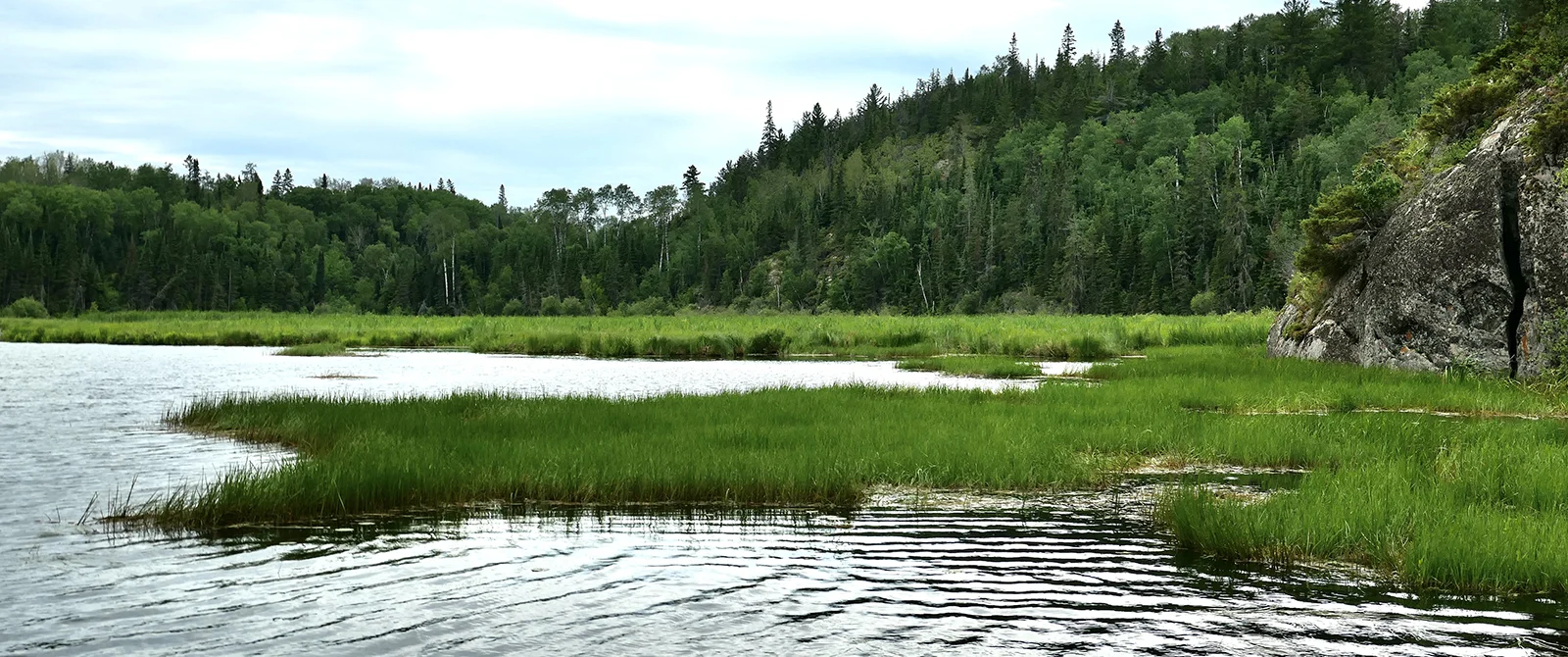Originally published in Lake of the Woods Area News, Volume 55, Number 3, Summer 2025
Several new infestations of Butomus umbellatus (common name: flowering rush) in Lake of the Woods, reported by property owners in 2024, have been verified. Locations include Mink Bay, Kendalls Inlet, and a small mainland bay along McKenzie Portage Road that streams into Spruce Lake. These are in addition to previously known infestations in several portions of Clearwater Bay.
So, the demon plant has begun its inevitable spread, meaning that this summer it is of vital importance that Lake of the Woods property owners be on sharp lookout for flowering rush. The story of this aquatic invasive plant’s devastating effect on lakes and rivers across North America and rapid spread in the Winnipeg River around Minaki showcase the importance of early identification, and notification of proper authorities.
Flowering rush is a harrowing Goliath among invasive aquatic plants. Its dense growth habit eradicates fish spawning areas, closes beaches, and renders bays and shallow channels impassible to boat traffic. Its spread has destroyed fish habitat and spawning areas in rivers and streams in the western USA and Canada and rendered docks and lake cottages unusable in Minnesota.
A small stand of flowering rush was first spotted growing along a shoreline in the Little Sand portion of the Winnipeg River north of Minaki a mere twenty-six years ago. Today the plant is found across hundreds of acres of shallow river bottom upstream and downstream from Minaki.
What is curious about the presence of flowering rush in Lake of the Woods is that it has been positively identified only in the furthermost downstream portions of the lake. The plant spreads from bulblets and dislodged rhizomes that are carried downstream by current. The bulblets or rhizomes root and begin new infestations.
So where did the flowering rush that is currently being dredged by hand by cottage owners in Clearwater Bay come from? Why hasn’t the plant been found growing upstream, around, say, Corkscrew Island, Rat Portage Bay, or further upstream toward Nestor Falls?
The only logical conclusion is that it is. The lake is so large, however, and contains such vast stretches of wilderness that the plant has been spotted only in areas with regular boat traffic (and by the relatively small number of people who know to look for it).
To date, the province of Ontario, unlike several other provinces, has done nothing to combat the spread of flowering rush in waterways across the province, aside from adding it, belatedly, to the Ontario Invasive Species Act, and printing posters. Concerned citizens at present are instructed to learn how to identify flowering rush, be on the lookout for it, and report any plant sightings via the online Early Detection Distribution Mapping System (eddmaps.org).
This does accomplish some good. Sightings are monitored by the provincial agencies, and we must hope that at some point provincial officials hear from enough property owners that they take action and begin investing in various programs of control.
Identifying flowering rush
Flowering rush grows in water from depths of a few centimetres to three metres. Slender, pointed, vertical green leaves are visible one-half to one meter above the water surface, noticeable narrower and shorter than native aquatic rushes. The sure way to identify flowering rush is to cut off a leaf.
If the cross-section is triangular, the plant is flowering rush. The plant is easy to identify in flower from late July to mid-September. Umbrella-shaped clusters of pink, upright flowers emerge from round stems held just above the tips of the leaves.
Flowering rush lookalike
Don’t confuse flowering rush with common spikerush (Eleocharis palustrus). You’ll see spikerush growing in shallow bays and along shorelines but never much deeper than one metre. Leaves have a slight bluish tint in sunlight, and generally grow taller above the water surface than flowering rush. Cut a leaf and the cross section will be round, not triangular. Fall flowers are unremarkable brown seed heads. Spikerush is not a true native but is not considered invasive.
For more information on flowering rush, photos, a video on how property owners can control its spread around docks and shorelines and help by submitting a sighting report using the EDDmaPS online reporting tool, visit minakiconservancy.ca. Click on “Environment and Heritage.”



